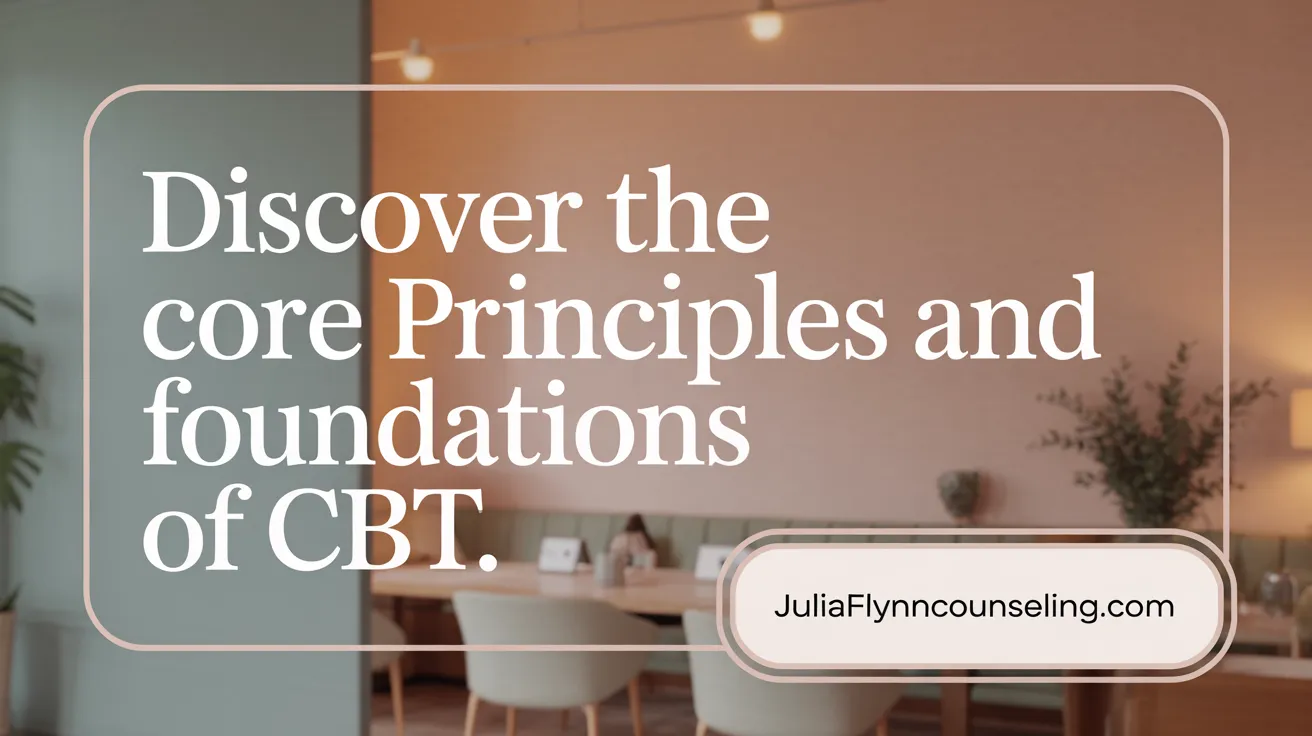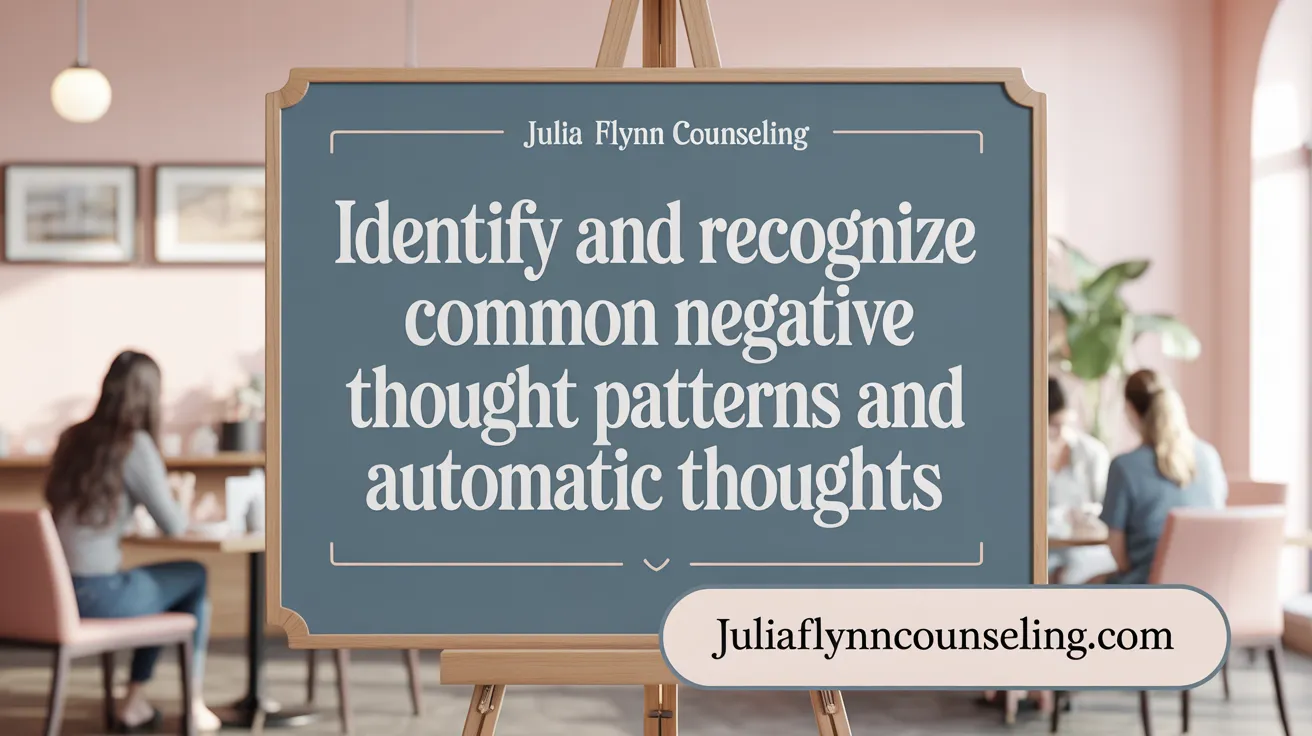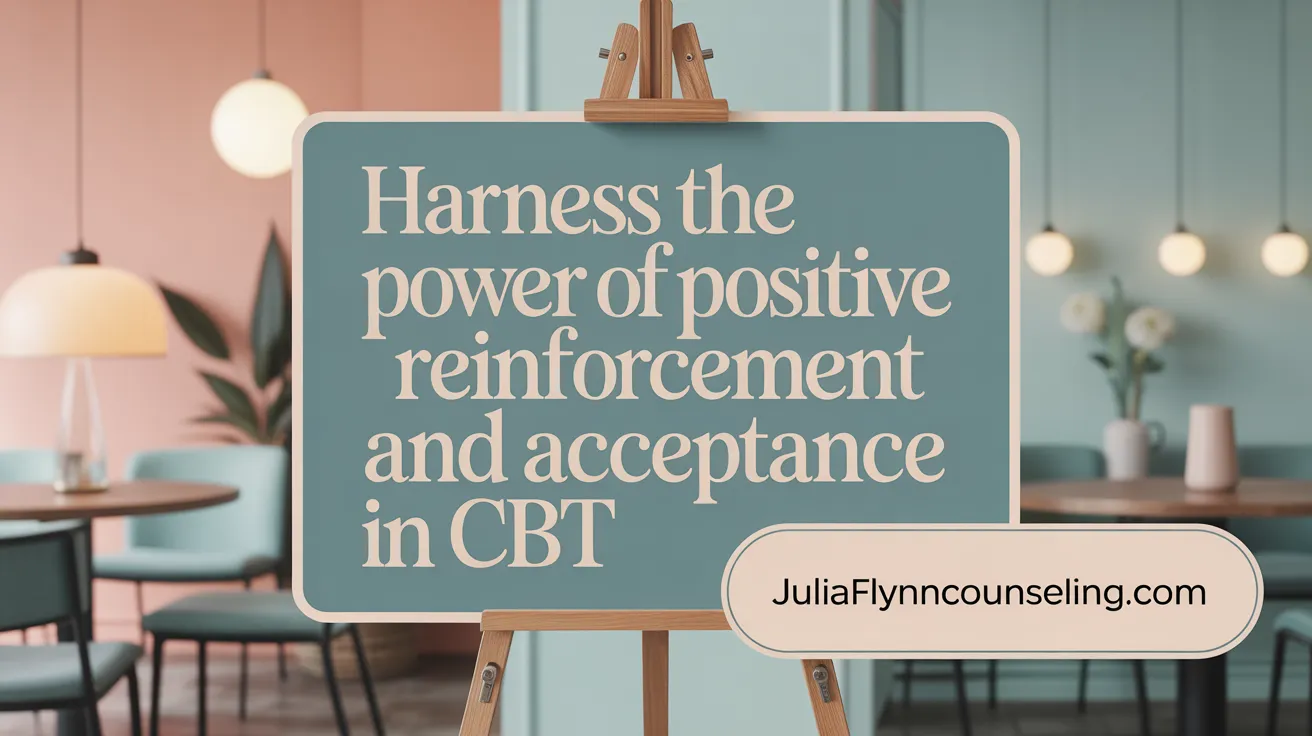Understanding Negative Thinking and CBT
Negative thinking can profoundly impact mental health, leading to stress, anxiety, and depression. Cognitive Behavioral Therapy (CBT) provides a structured and effective approach to identifying and overcoming these harmful thought patterns. This article explores CBT strategies that empower individuals to reframe negative thoughts and cultivate healthier mental habits.
The Foundations of Cognitive Behavioral Therapy

What is CBT?
Cognitive Behavioral Therapy (CBT) is a structured, goal-oriented talk therapy designed to help people identify and change negative patterns in their thinking and behavior. It focuses on improving mental health by enabling individuals to develop healthier coping skills. CBT is commonly used to treat mental health conditions including depression, anxiety disorders, post-traumatic stress disorder (PTSD), obsessive-compulsive disorder (OCD), eating disorders, and substance use disorders.
Core principles of CBT
CBT is founded on the core principle that thoughts, feelings, and behaviors are closely interconnected. Negative or unhelpful thoughts can lead to distressing emotions and maladaptive behaviors, creating a cycle that maintains or worsens mental health issues. By recognizing and challenging these unhelpful thought patterns, individuals can interrupt this cycle and adopt more balanced perspectives and healthier behaviors.
How thoughts, feelings, and behaviors are interconnected
The therapy emphasizes the dynamic triad where an individual's thoughts influence how they feel emotionally, which in turn affects their actions or behaviors. For instance, negative thoughts about a social situation might create anxiety, leading a person to avoid social interactions. CBT aims to break such vicious cycles by teaching alternative, realistic thinking that fosters positive feelings and adaptive behaviors, using techniques such as cognitive restructuring, thought records, and behavioral activation.
Common mental health conditions treated with CBT
CBT is effective across a broad range of psychological disorders, including but not limited to depression, anxiety disorders, PTSD, OCD, eating disorders, substance use disorders, and bipolar disorder. Its adaptable methods also support managing stress, low mood, sleep disturbances, and various other emotional and behavioral challenges.
Typical structure and duration of CBT therapy
CBT typically involves a limited number of sessions, generally ranging from 5 to 20 meetings. These sessions usually focus on current problems and involve setting targeted goals. Clients actively participate through homework assignments such as journaling, thought records, and practicing new skills outside sessions, which help consolidate progress and foster long-term benefits.
Identifying and Recognizing Negative Thought Patterns

What are common types of negative or unhelpful thoughts?
Common unhelpful thoughts include catastrophic expectations, black-and-white thinking, overgeneralization, personalization or self-blame, focusing only on negatives, and expecting the worst outcomes. These patterns distort reality and can lead to increased anxiety, low mood, and unrealistic fears. For example, black-and-white thinking sees things as all good or all bad, ignoring the nuances in situations. For more on types of unhelpful thought patterns, see self-help CBT techniques.
What are automatic thoughts?
Automatic thoughts are spontaneous, often unconscious interpretations or evaluations of events that quickly influence how we feel and behave. They frequently reflect underlying cognitive distortions such as catastrophizing (expecting disaster) or personalization (blaming oneself). For instance, after a difficult conversation, an automatic thought might be "I'm not good enough," affecting emotions and actions. Learn more about automatic thoughts in CBT.
Why is recognizing these thoughts important?
Recognizing automatic and unhelpful thought patterns is crucial because it allows individuals to challenge and reframe these thoughts, preventing negative spirals. This self-awareness, also called metacognition, is a central part of Cognitive Behavioral Therapy (CBT). It promotes emotional regulation and healthier behavioral responses by creating distance from distorted thinking. See also Reframing unhelpful thoughts techniques.
Tools to detect negative thought patterns
CBT uses tools like thought records or automatic thought records where individuals note down triggering situations, associated thoughts, feelings, and evidence supporting or contradicting these thoughts. This structured approach helps identify patterns and provides a foundation for challenging distortions and developing balanced perspectives.
Regular practice with these tools enhances metacognitive skills, enabling quicker identification of dysfunctional thoughts and thus reducing their emotional impact over time. For practical guidance, see CBT-based thought challenging activities.
The 'Catch It, Check It, Change It' Technique for Reframing Thoughts

What is the 'catch it, check it, change it' technique?
The 'catch it, check it, change it technique' is a practical Cognitive Behavioral Therapy (CBT) method designed to help individuals manage unhelpful or negative thoughts. It consists of three stages: first, catching or identifying the unhelpful thought when it arises; second, checking the evidence supporting or contradicting this thought; and third, changing the thought by reframing it into a more balanced, positive, or neutral alternative.
Steps involved in the technique
- Catch it: Recognize the automatic negative thought as it occurs.
- Check it: Reflect critically on the thought by examining evidence of thoughts, questioning assumptions, and considering alternative explanations.
- Change it: Replace the original thought with a more accurate, helpful, or neutral thought that better reflects reality.
How it helps reframe negative thoughts
This technique campaigns against automatic negative thinking patterns such as types of unhelpful thoughts, including catastrophizing, black-and-white thinking, and self-blame. By consciously interrupting and dissecting these patterns, individuals gain greater control over their thought processes. This leads to reduced stress and anxiety, improved mood, and enhanced mental wellbeing by breaking cycles of negative thinking through reframing with positive alternatives.
Use of thought records in this process
Thought record tools are structured methods that complement this technique by providing a systematic way to document situations, related thoughts, evidence supporting or opposing those thoughts, emotional responses, and alternative viewpoints. Using thought records encourages consistent practice of the 'catch it, check it, change it' approach and helps deepen understanding of cognitive patterns, making reframing more effective over time.
Cognitive Restructuring: Challenging and Modifying Distorted Thoughts
What is cognitive restructuring?
Cognitive restructuring is a core technique in cognitive behavioral therapy (CBT) that helps individuals identify and change distorted thinking patterns. This process involves recognizing unhelpful thoughts, examining evidence of thoughts, gathering supporting or contradicting evidence, and then developing reframing with positive alternatives.
Which cognitive distortions are often addressed in CBT?
CBT specifically targets several common cognitive distortions including:
- Black-and-white thinking: Viewing situations in extremes without middle ground.
- Catastrophizing: Expecting the worst possible outcome.
- Overgeneralization: Applying one negative event broadly across situations.
- Personalization: Blaming oneself unnecessarily.
- Disqualifying positives: Ignoring positive aspects of a situation.
- Jumping to conclusions: Making negative assumptions without evidence.
These distortions and types of unhelpful thought patterns are commonly identified and challenged in CBT practice.
Techniques used in cognitive restructuring
Key strategies include evidence gathering, where clients collect facts to assess the truth of their thoughts, and Socratic questioning, which uses guided inquiries to scrutinize beliefs logically. Cost-benefit analysis is also employed to weigh the emotional and practical pros and cons of maintaining negative thought patterns versus adopting healthier alternatives. Other useful techniques are thought records, CBT problem-solving methods, and cognitive defusion exercises.
Benefits of cognitive restructuring
This technique can reduce symptoms of anxiety and depression, improve communication and interpersonal relationships, foster healthier coping strategies, and strengthen self-esteem and resilience. By enabling a clearer, more balanced perspective, cognitive restructuring plays an essential role in alleviating psychological distress and promoting mental well-being. It is a foundational method in many CBT exercises and techniques that contribute to mental health improvement.
Behavioral Techniques Complementing Thought-focused Strategies
How do behavioral techniques complement cognitive strategies in CBT?
Behavioral techniques play a vital role in cognitive behavioral therapy by encouraging individuals to actively engage in behaviors that counteract negative thought patterns. Behavioral activation helps individuals increase participation in rewarding activities, which can improve mood and reduce depressive symptoms. Exposure therapy involves gradually confronting feared situations or stimuli, thereby reducing avoidance behaviors and allowing patients to test and correct distorted beliefs related to anxiety or phobias.
Activity scheduling is another important technique, where clients plan and engage in structured activities to break cycles of inactivity and avoidance. Behavioral experiments allow individuals to test the validity of negative thoughts through real-life experiences, reinforcing cognitive shifts. Together, these techniques bridge the gap between thoughts and actions, solidifying cognitive changes through positive behavioral reinforcement.
What role do mindfulness and relaxation play in CBT?
Mindfulness and relaxation techniques serve as valuable behavioral supports in CBT. Practices such as mindfulness meditation cultivate present-moment awareness and reduce rumination on unhelpful thoughts, fostering emotional regulation. Relaxation methods, including deep breathing exercises and progressive muscle relaxation, help manage physiological symptoms of stress and anxiety. These techniques not only decrease tension but also improve focus and calmness, making it easier for individuals to apply cognitive strategies effectively.
In summary, behavioral activation, exposure therapy, activity scheduling, and behavioral experiments work in tandem with cognitive restructuring to enhance mental health outcomes. Mindfulness and relaxation further support this process by reducing stress and increasing emotional resilience.
Self-Help CBT Techniques for Daily Practice
Can CBT techniques be practiced without a therapist?
Yes, many CBT techniques can be effectively practiced independently. Self-help CBT methods empower individuals to manage their mental health by reframing negative thoughts, scheduling "worry time," and gradually facing fears through systematic exposure. These strategies are often supported by online resources, videos, and structured guides like thought records that aid in self-reflection and cognitive restructuring.
What are key self-help strategies in CBT?
- Reframing Unhelpful Thoughts: Using the "catch it, check it, change it" approach, individuals learn to identify negative or distorted thoughts, examine evidence for and against them, and replace them with balanced or positive perspectives.
- Managing Worries and Fears Gradually: Techniques such as setting aside specific worry periods and gradually confronting feared situations help reduce anxiety and build confidence (Worry time technique) .
- Building Resilience and Healthy Habits: Developing routines that support mental well-being, such as maintaining to-do lists to reduce avoidance, practicing relaxation exercises (Relaxation techniques), and fostering a positive mindset through gratitude and optimism.
Online and Self-Guided CBT Methods
The NHS and mental health platforms provide extensive CBT self-help materials, including worksheets (Powerful CBT exercises, videos, and personalized mental health plans. These resources allow individuals to apply CBT-based problem-solving, resilience building, and exposure techniques at their own pace. Practicing such strategies routinely can enhance stress management, improve mood, and support overall mental well-being.
By consistently applying these self-help CBT techniques, individuals can break cycles of negative thinking and develop greater emotional control, even outside formal therapy settings.
Positive Reinforcement and Acceptance in Cognitive Behavioral Therapy

How does positive reinforcement contribute to CBT?
Positive reinforcement in CBT involves practices such as positive affirmations, gratitude journaling, and cultivating self-compassion. These techniques help counteract negative self-talk, promote a more optimistic outlook, and increase motivation. By reinforcing positive thoughts and behaviors, individuals can improve their mental wellbeing and create a foundation for lasting change.
What is the role of acceptance in CBT?
Acceptance in CBT means acknowledging negative thoughts without judgment rather than trying to suppress them. This approach reduces the emotional impact of unhelpful thoughts and promotes cognitive flexibility. Acceptance helps individuals develop a balanced perspective, enabling them to manage difficult emotions more effectively and break free from negative cycles.
Incorporating positive psychology with CBT
Modern CBT increasingly integrates positive psychology elements, emphasizing strengths, solutions, and flourishing alongside addressing problems. This blended approach supports not only symptom reduction but also the development of resilience and wellbeing.
Benefits of balanced cognitive perspectives
By combining positive reinforcement with acceptance, CBT enables individuals to view thoughts more realistically and compassionately. This balance reduces stress and anxiety, improves mood, and supports healthier emotional regulation, leading to better overall mental health.
Challenges and Strategies for Effective CBT Engagement
What are common challenges in CBT?
Building a strong therapeutic alliance in CBT is essential but can be challenging. Establishing trust between the individual and therapist is often difficult but critical for openness and progress. Additionally, many face resistance in therapy when confronting uncomfortable or distressing thoughts during therapy. Exercises must also be tailored to individual needs since one-size-fits-all approaches may not work for everyone.
How can individuals enhance their CBT experience?
Active participation in therapy is crucial for maximizing benefits from CBT. Individuals should be honest about their thoughts and feelings, share progress openly with their therapist, and consistently complete CBT homework assignments. Patience is important since cognitive and behavioral changes occur gradually through continuous practice and effort.
Is emotional discomfort normal during CBT?
Emotional discomfort, such as crying, fatigue, or frustration, is common in CBT as individuals explore distressing thoughts and emotions. While challenging, these reactions typically lessen over time with repeated practice and the supportive guidance of a therapist. This discomfort often signals therapeutic progress rather than harm.
Adopting these strategies can overcome common barriers and foster a productive, supportive therapeutic environment essential for successful cognitive-behavioral therapy.
Long-Term Benefits and Applications of CBT

What mental health conditions can CBT effectively treat?
CBT is widely recognized for its effectiveness in treating numerous mental health conditions, including depression, anxiety disorders, post-traumatic stress disorder (PTSD), obsessive-compulsive disorder (OCD), eating disorders, substance use disorders, bipolar disorder, and schizophrenia. Its structured approach helps individuals address faulty thinking patterns that contribute to their symptoms.
How does CBT contribute to long-term mental wellbeing?
Beyond immediate symptom relief, CBT equips individuals with valuable skills such as emotional regulation, problem-solving, and heightened self-awareness. These skills foster resilience, enabling individuals to handle future stressors and prevent relapse. CBT encourages active participation and practice through homework assignments, making the learned strategies sustainable for ongoing mental health management.
Can CBT be delivered remotely?
CBT has evolved to be highly adaptable, including delivery through online platforms and self-help programs. This flexibility increases accessibility for many people who may face barriers to in-person therapy. Remote CBT maintains clinical effectiveness for issues like anxiety and depression, offering resources such as virtual sessions, structured worksheets, and digital tools.
How does CBT support improved relationships and life functioning?
By helping individuals develop healthier thinking patterns and improve emotional control, CBT positively affects communication and interpersonal relationships. It fosters confidence and better coping mechanisms, which enhance workplace performance and social interactions. Overall, CBT manages current challenges while promoting flourishing in various life areas through behavioral strategies and positive psychology approaches.
Empowering Change Through CBT
Cognitive Behavioral Therapy offers a scientifically supported, practical framework to overcome negative thinking and promote mental health. By identifying, challenging, and reframing unhelpful thoughts, along with behavioral strategies and positive reinforcement, individuals can break the cycle of negativity and build resilience. Whether with professional guidance or through self-help techniques, CBT equips people with lifelong skills to manage challenges, improve emotional wellbeing, and achieve a healthier, balanced outlook on life.
